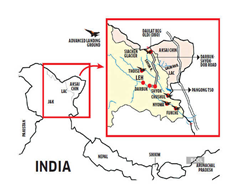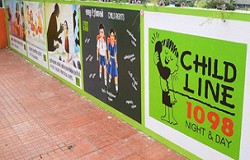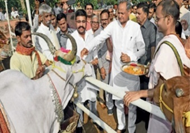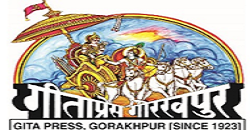|
Art and Culture
Rath Yatra in Puri starts

|
The annual Puri Rath Yatra, also known as the Puri Chariot Festival, is held in Odisha.
About the event:
- Location: RathaJatra, the Festival of Chariots of Lord Jagannatha is celebrated every year at Puri, the temple town in Orissa, on the east coast of India.
- Deities: The presiding deities of the main temple, Sri Mandira, Lord Jagannatha, Lord Balabhadra and Goddess Subhadra, with the celestial wheel Sudarshana are taken out from the temple on their respective chariots.
- Features: The huge, colourfully decorated chariots are drawn by hundreds and thousands of devotees on the badadanda, the grand avenue to the Gundicha temple, some two miles away to the North.
- After a stay for seven days, the deities return to their abode in Srimandira.
- The description of the chariot has been explained in the Kathopanishada, SkandaPurana, Brahma Purana, PadmaPurana, and KapilaSamhita, etc.
- Other names: The festival is also known as Gundicha Jatra, Ghosa Jatra, Navadina Jatra, Dasavatara Jatra and by a variety of other names.
|
|
History
Mudumal

|
Telangana government is working towards acquiring UNESCO World Heritage Site status for ‘Mudumal’ in Narayanpet district, has a unique megalithic burial-cum-astronomical site from 3,500 BC.
About:
- The Menhirs of Mudumal, also known as the "Megastones," are ancient megalithic structures.
- These megalithic monuments are characterized by large upright stones or menhirs, which were erected by the prehistoric communities for various purposes, such as religious or funerary rituals.
- These structures provide valuable insights into the cultural, social, and religious practices of the ancient civilizations that inhabited the region.
- Menhirs enabled the early agrarian people to chart the movement of the Sun.
- They are aligned exactly with the days of solar significance, like the summer solstice and the winter solstice.
|
|
History
Mesolithic-era rock paintings in Guntur

|
A Mesolithic period rock painting depicting a person tilling a piece of land has been found in Orvakallu village in Guntur district, Andhra Pradesh.
About:
- The paintings were made with “natural white kaolin and red ochre pigments”.
- Ochre is a pigment composed of clay, sand, and ferric oxide.
- Kaolinite is a soft, earthy, and usually white mineral produced by the chemical weathering of aluminium silicate minerals like feldspar.
|
- However, some of the sketches and outlines are still intact for the visitors.
- One of the paintings depicted a man catching wild goat with his left hand while wielding a hook-like implement to control it.
- Another showed two couple standing with their hands rose while a child stood behind them.
Mesolithic era:
- It was the transitional phase between the Palaeolithic and the Neolithic Ages. On the basis of archaeological discoveries, the beginning of the Mesolithic Age in Indian subcontinent is dated to around 10,000 BC.
- This period witnessed the rise in temperature, as a result of which the climate became warm.
- These changes further resulted in melting of ice of the earlier period and brought about changes in flora and fauna.
- Though man was still in hunting-gathering stage, he now started fishing and some domestication of animals.
- The main tools they used are called the microliths or small stone tools.
- The Rock paintings found at Bhimbetka (near Bhopal) belonging to the period indicate the artistic taste of the people.
|
|
Location in News
Daulat Beg Oldi

|
Location in News
Daulat Beg Oldi
The Border Roads Organisation is giving the final shape to an alternate 56-km road that will connect Sasoma in the Nubra Valley to the strategically important Daulat Beg Oldi, or DBO, Sector.
- The new road is via Saser La pass, which is 17,660 feet high.
About the place:
- DBO is the only area where physical military collusion between Pakistan and China is possible.
- If India were to lose control of this sector and the Saser La pass, the People’s Liberation Army (PLA) would make our defences in the Siachen Glacier untenable.
- A notable feature of the DBO Sector is the Depsang Plains, which are an extension of the disputed Aksai Chin plateau, situated at a base height of 5,200 meters (17,000 feet).
- The Depsang Plains are interspersed with gradual hills ranging from 5,500 to 6,000 meters in height (18,000–19,500 feet).
- These plains are irregular in shape and measure 60-70 km from west to east and 40-50 km from north to south.
- To the north, the Depsang Plains are bounded by the Karakoram Range, while the eastern boundary is defined by the Lak Tsung Range which forms the western watershed of Karakash River.
- To the south lies the Shahi Kangri Range. The terrain, which includes gradual hills, can be easily negotiated by wheeled and tracked vehicles, making it suitable for mechanised operations.
- It is also the only area that provides direct access from India to Aksai Chin.
|
|
Geography
7.2 magnitude quake strikes near Tonga

|
An earthquake of magnitude 7.2 struck near Tonga in the South Pacific Ocean.
- The earthquake's epicenter was located about 280 km southwest of Tonga, at a depth of 167.4 km.
About the location:
- Tonga, officially the Kingdom of Tonga, is a country in the south-western Pacific Ocean.
- It consists of some 170 islands divided into three main island groups:
- Tongatapu in the south, Ha‘apai in the centre, and Vava‘u in the north.
- Isolated islands include Niuafo‘ou (Capital city).
- Tonga is part of the Pacific 'Ring of Fire', a zone of frequent earthquakes and volcanic eruptions that surrounds the basin of the Pacific Ocean.
- Earthquakes and volcanic activity can occur at any time, and can trigger tsunami alerts.
- The Tonga Trench is the place where the Pacific and Australian plates meet.
- The motion of these two plates has created one of the most seismogenic (“earthquake-making”) regions in the world.
|
|
Polity & Governance
Childline to be merged with Emergency Response Support System

|
The government has decided to integrate the Child Helpline (1098) with the telephonic short code 112 and to link them to district child protection units in nine states and UTs.
About:
- Under the Child Protection Services Scheme, which has been renamed Mission Vatsalya, the ministry was supporting the 24x7 helpline Childline 1098 service through the Childline India Foundation (CIF) and over 1,500 partner NGOs.
- The merger is a part of the broader ‘One Nation One Helpline’ initiative.
- The Centre for Development of Advanced Computing (C-DAC) will run the system.
- NIPCCD, railways and NIMHANS, in collaboration with state training institutes, will train the staff.
- In the initial phase, Andhra Pradesh, Arunachal Pradesh, Bihar, Gujarat, Goa, Ladakh, Mizoram, Puducherry, Dadra & Nagar Haveli, and Daman & Diu are the states where the childline will be run by the government.
|
Mission Vatsalya:
- Mission Vatsalya is a Centrally-sponsored scheme.
- The mission envisages a robust ecosystem through the network of State and local Governance systems to ensure the safety and security of children in the country.
- As per the Census 2011, there are 472 million children in India under the age of 18 years, representing 39% of the country’s total population.
|
|
|
Polity & Governance (GS-II)
National Internet Exchange of India (NIXI)

|
National Internet Exchange of India (NIXI) celebrated its 20th Foundation Day.
About:
- It was set up on June 19, 2003.
- NIXI is a not-for-profit (Section 8) company under the aegis of MeitY.
- It is tasked to increase internet penetration and adoption in India by facilitating the various infrastructure aspects to enable the internet ecosystem to be managed and used by the masses.
|
|
Polity and Governance
Rajasthan's aid to boost religious tourism

|
The Rajasthan government has sanctioned Rs 13.48 crore to promote religious tourism in the Nagaur, Jaisalmer and Alwar regions of the state.
About the initiative:
- Under the initiative,
- Rs 3.1 crore has been sanctioned for Butati in Nagaur district,
- Rs 1.65 crore for Ghatveshwar Mahadev Temple,
- Rs 1.61 crore for Harmal Das Ji Maharaj Temple and
- Rs 1.36 crore for improving facilities at Dargah Hazrat Samman Badi Khatu.
- Besides, an aid of Rs 4.24 crore has been sanctioned for the development of Mataji Mandir and Ganga Mata Mandir, Talvriksha in Alwar's Bansur Fort.
|
|
Polity and Governance
Kerala Startup Mission’s Infinity Centre

|
The Chief Minister of Kerala, Pinarayi Vijayan is going to inaugurate the first Infinity Centre of the Kerala Startup Mission (KSUM) in Dubai, rolling out a programme of setting up one-stop destinations across the world to strengthen the State’s ecosystem for nascent companies.
About:
- Kerala Startup Mission (KSUM), formerly known as Technopark is the nodal agency of Government of Kerala for entrepreneurship development and incubation activities in Kerala, India.
- Objective:
- The primary objectives of KSUM were to undertake the planning, establishment, and management of Technology Business Incubators/ Accelerators in Kerala.
- And to promote technology based entrepreneurship activities and create the infrastructure and environment required for promoting high technology based business activities.
|
|
Polity and Governance
Gita Press, Gorakhpur, awarded Gandhi Peace Prize for 2021

|
The Gandhi Peace Prize for 2021 is to be conferred on Gita Press, Gorakhpur, one of the largest publishers of religious texts such as the Bhagavad Gita, the Ramayana and the Upanishads.
About the prize:
- The annual Gandhi Peace Prize was instituted in 1995 on the occasion of the 125th birth anniversary of Mahatma Gandhi.
- The award carries an amount of ?1 crore, a citation, a plaque and an exquisite handicraft or handloom item.
- Gita Press:
- Gita Press is one of the world’s largest publishers, having published 41.7 crore books in 14 languages, including 16.21 crore Bhagavad Gita.
- It completes 100 years of its establishment in 2023.
- The institution has never relied on advertisement in its publications, for revenue generation.
|
|
Economy
Skill Impact Bond

|
The first-of-its-kind Skill Impact Bond has enrolled close to 18,000 young Indians from 18 states and Union Territories so far.
About:
- The Skill Impact Bond is India’s first development impact bond for skilling and employment, with the goal of benefitting 50,000 young Indians over four years, 60% of who would be women.
- As an innovative outcomes-based financing tool that leverages private sector capital and expertise, the Skill Impact Bond shifts its focus from inputs like training and certification to outcomes like job placement and retention for India’s youth.
- The Skill Impact Bond is an initiative of the National Skill Development Corporation (NSDC) in collaboration with a coalition of partners.
|
|
Science & Technology
North India’s first skin bank

|
The Centre-run Safdarjung Hospital launched a ‘skin bank’ in the national capital where deceased donors can donate their skins.
About
- The skin can be donated by any deceased person within 6 hours of their death and then will be stored, processed in the skin bank and further provided to needy patients.
- Storage period: The donated skin can be stored for three to five years.
- Who can donate? No blood group or any other matching is required. Any donated skin can be used to treat any patient.
- Usage: The skins which will be donated at the bank can be very helpful in treating burns patients, especially those with extensive burns and with other wounds.
|
Around 7 to 10 million people sustain burns every year in India. Out of these 1.4 lakhs lives are lost and 1 .5 lakh people develop various deformities.
|
|
|
Science and Technology
TAPAS (Tactical Airborne Platform for Aerial Surveillance) Unmanned Aerial Vehicle (UV)

|
In a remarkable feat, the Indian Navy and the Defence Research and Development Organisation (DRDO) successfully carried out the transfer of command and control capabilities of TAPAS Unmanned Aerial Vehicle (UAV).
About:
- The Tapas UAV, developed by DRDO, is a Medium Altitude Long Endurance (MALE) unmanned aerial vehicle.
- The vehicle, which was publicly showcased during its first flight at Aero India 2023 in Bengaluru earlier this year, has a range of more than 18 hours and can operate at altitudes of up to 28,000 feet.
- It was developed in response to the ISTAR (Intelligence, Surveillance, Target Acquisition, Tracking, and Reconnaissance) requirements of the tri-services.
|
|
Science and Technology
MQ-9B armed drones

|
Recently, India and the US have signed a 3 billion dollars deal for outright purchase of 31 MQ-9 Reaper or Predator B drones.
- It was a tri-service acquisition but is being led by the Indian Navy.
About 31 MQ-9B armed drones :
- Key features:
- Carry Air-to-ground missiles: The Reaper comes with nine hardpoints, capable of carrying sensors and laser-guided bombs besides air-to-ground missiles.
- Capacity: It has an endurance of over 27 hours and can operate up to 50,000 ft with a 1,746 kg payload capacity.
- Payloads attached: It can carry multiple mission payloads including;
- Electro-optical/Infrared (EO/IR),
- Lynx, Multi-mode Radar,
- multi-mode maritime surveillance radar,
- Electronic Support Measures (ESM), laser designators, and various weapons and payload packages.
|
|
Science and Technology
World Sickle Cell Day

|
June 19 is observed as World Sickle Cell Day
About:
- Background:
- World Sickle Cell Awareness Day has its origins in a United Nations General Assembly resolution adopted on December 22, 2008.
- The resolution recognised sickle cell disease as a global health concern and designated June 19th as the official day to raise awareness about the disease worldwide.
- Definition:
- SCD is a chronic single gene disorder causing a debilitating systemic syndrome characterized by chronic anaemia, acute painful episodes, organ infarction and chronic organ damage and by a significant reduction in life expectancy.
- Symptoms: Symptoms of sickle cell disease can vary, but some common symptoms include:
- Chronic Anaemia: leading to fatigue, weakness, and paleness.
- Painful episodes (also known as sickle cell crisis): these can cause sudden and intense pain in the bones, chest, back, arms, and legs.
- Delayed growth and puberty
|
|
Science and Technology
Space telescope designed by IUCAA for ADITYA-L1 mission

|
The Solar Ultraviolet Imaging Telescope (SUIT), a unique space telescope developed by Pune’s Inter-University Center for Astronomy and Astrophysics (IUCAA), has been delivered to the Indian Space Research Organisation (ISRO).
About:
- The telescope is set to be integrated with the ADITYA-L1 mission, expected to be launched in mid-August this year.
- ADITYA-L1 will be ISRO’s first space observatory dedicated to studying the Sun.
- It will fly approximately 1.5 million kilometers from Earth to the L1, or Lagrange point 1, which is one of the five favourable spots for observing the Sun.
- The mission aims to provide regular images and updates on the Sun’s surface phenomena and space weather.
|
Aditya L1 mission:
- The Aditya-L1 mission will carry seven different payloads capable of studying various phenomena on the Sun across the electromagnetic spectrum and solar wind.
- Aditya-L1 will enable seamless measurement of solar radiation from Hard X-ray to Infrared, as well as in-situ measurements of particles in the solar wind and the Sun’s magnetic field at the L1 point.
|
|
|
Environment
Mizoram Parachute Gecko

|
Scientists recently discovered a new species of gliding geckos in Mizoram, named ‘Mizoram parachute gecko’.
About the species:
- It is a newly discovered species of gliding geckos.
- The Mizoram parachute gecko, or Gekko mizoramensis, is one of the 14 geckos known to take to the air.
- It is thought that the species evolved as a result of being separated from its closest relative, G. popaensis, by the Arakan Mountains.
- Features:
- Unlike other gliding reptiles, which use the bone to form their flying surfaces, these geckos have flaps of skin.
- When the lizards leap off a tall structure, air resistance pushes the flaps out to their full extent, much like a parachute, slowing the speed at which they fall.
- The skin flaps also help to break up their shape, acting as a camouflage against predators.
- Their specialised camouflage and body shape are shared by multiple species, making it hard to tell them apart from one another.
|
What are Geckos?
- They are reptiles and are found on all continents except Antarctica.
- They are believed to be among the earliest evolving squamates, the group that contains all lizards, snakes and their close relatives.
- There are more than 1,200 species of gecko today, making up around a fifth of all known lizards.
|
|
|
Environment
Blue Ocean Event (BOE)

|
Arctic Ocean could be ice-free in summer by 2030s, say scientists.
About:
- A Blue Ocean Event (BOE) is when the Arctic Ocean changes from being covered in ice year-round and reflecting most of the sunlight that impacts it back into space to being mostly ice-free blue water for a period of time during the warm season (May through October), which will cause it to absorb most of the sunlight that impacts it.
- A Blue Ocean Event occurs when virtually all sea ice disappears and the surface colour changes from white (sea ice) to blue (ocean).
- According to many, a Blue Ocean Event starts once Arctic sea ice extent falls below 1 million km².
|





















